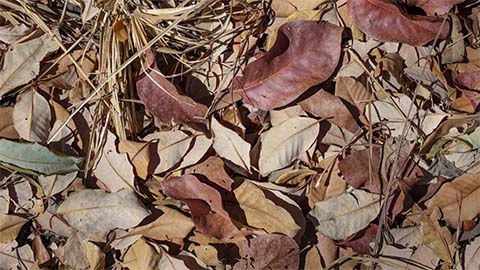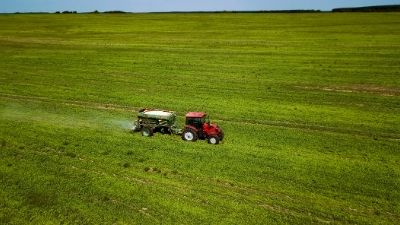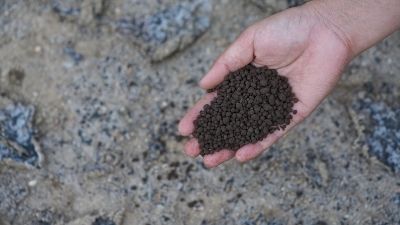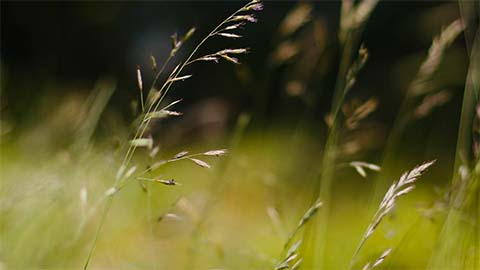It's All About Soil Structure!

I am asked repeatedly by folks, “What is the best amendment I can add to my soil to improve its properties?” For many questions, my standard response as a professor is generally, “it depends!” Fortunately, in this case it does not depend, it is clear. The single best soil amendment—the one that provides desirable benefits regardless of the soil one applies it to—is organic matter.
In a previous post (October 2017) I discussed various organic matter soil amendments that are readily available, and covered many of the nuances associated with the use of each type. You can refer to the USU Dirt Diggers Digest archive for details (https://extension.usu.edu/dirtdiggersdigest). In this post, I want to discuss the importance of soil organic matter’s function in soil, particularly its influence on an all-important soil property—soil structure.
Soil quality and improvement is really all about building soil structure—or the formation and stabilizing of soil aggregates. Ninety-plus percent of the solid materials making up natural soils are particles derived from the breakdown of primary minerals (sand and silt) or the formation of secondary minerals (clay) in the mix. The rest of the solid material is organic matter. Though it makes up a small fraction of soil solids by comparison, organic matter is responsible for the formation and stability of soil aggregates. That’s important because aggregation opens up soils to allow optimal air and water movement and ensures that living things in the soil (plants, insects, bacteria, fungi, etc.) can obtain the water (and nutrients in the water) and the atmospheric building blocks (esp. carbon and oxygen) that they need to grow and thrive.
Moreover, organic matter is an important source of carbon for many soil organisms responsible for its decomposition, which produces the gelatins, polysaccharides, organic acids and other “glues” that hold soil particles together in aggregates. Organic matter decomposition not only provides needed nutrition directly to many soil organisms, and the formational compounds for soil structure, it releases nutrients locked in the material, thereby recycling them for living plant and animal use. Another key property of organic matter is that it has a high affinity for the adsorption and retention of nutrients and water in soils. Organic matter is simply the best thing one can add to enhance soil properties and function as a growth medium. It’s nature’s “silver bullet” so to speak, for soil health establishment and improvement.
Unfortunately, the content of organic matter in soils is never static. The natural decomposition of organic matter ensures that its supply needs regular replenishment; otherwise, its content in soils will continually decrease resulting in the loss of its beneficial contribution to soil structure and other properties I have discussed. One must annually introduce organic matter into the soil at a minimum to maintain soil properties, and preferably to enhance them over time.
Regular additions of organic matter include growing plants in the soil or through direct incorporation. Growing plants in soils (e.g., establishing a turf, growing cover crops on an idle garden plot, ornamental tree and shrub plantings, etc.) recycles root tissues, surface thatch, leaves and other organic materials to the soil over time. The broadcast and incorporation of organic matter on annual planting areas (e.g., open garden soils, flowerbeds, etc.) allows one to mix organic matter to greater depths in the soil and more rapidly increase soil organic matter content over time.
How much, you ask, is too much to add? When it comes to organic matter addition (unlike many other amendments) there is no “too much” as long as care is taken to account for the properties specific to each type of organic matter soil amendment (see details in the October 2017 post cited at the beginning of this one). The rules of thumb for application are as follows:
-
Turf – 0.25 to 0.50 inches of well-composted material spread and raked in.
-
Perennial plantings (ornamentals and trees) – 1 to 2 inches of material lightly scratched into the surface soil around the plants (worms, beetles, ants and other critters will incorporate it deeper).
-
Open annual planting areas (gardens, flowerbeds, etc.) – 2 to 3 inches of material spread over the surface and incorporated to the desired depth.
The above amounts will help gradually build soil organic matter levels over time, provide nutrients to plants and animals in the soil, provide adsorption and retention capacity for water and nutrients in the soil, and help to form and stabilize soil structure—the integrator of all things desirable with respect to soil health and productivity.
For more information:
- ScienceDirect’s compendium of articles and writings on soil structure
- The Soil Health Institute’s Action Plan for Soil Health, which cites many soil properties (esp. soil structure and aggregate stability) critical to soil health
Authors
Grant Cardon,USU Extension Soils Specialist
Related Research






